Data Devices Brock 880/1
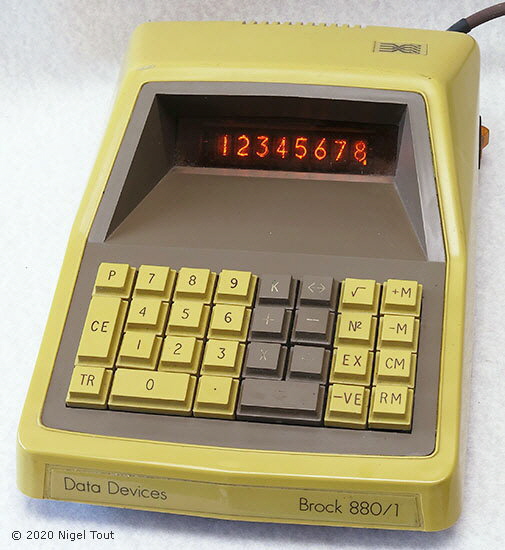
Data Devices Brock 880/1
Distinctive features: Uses 6-chip chipset from Electronic Arrays, has first generation 'Pandicon' display. Data Devices was a British manufacturer which made a couple of models of electronic calculators for a short period in the early 1970's.
Display: 8 digits Mullard (Philips) ZM1206 'Pandicon'. The first generation of the Pandicon which is used here is effectively 8 'Nixie' type assemblies in a single tube. This was a short-lived technology.
The calculator accepts and calculates with 16 digits and displays either the 8 most-significant digits or 8 least-significant digits using the '<->' key as needed.
Capabilities: 4 function, square root, square, memory.
Technology: Electronic Arrays S-100 chip-set (distributed by Philips in Europe) consisting of (date codes in brackets) FDY 110-5001 (7047), FDY 120-5013 (7101), FDY 150-5005 (7101), FDY 310B-7014 (7135), FDY 320B-7002 (7135), FDY 360B-7006 (7144).
Power supply: 230V AC.
Size: 197 mm x 295 mm x 90 mm (7.75" x 11.6" x 3.5").
Made in Great Britain.
The latest date code on a chip is week 44 of 1971, so the calculator must have been manufactured at some time after this.
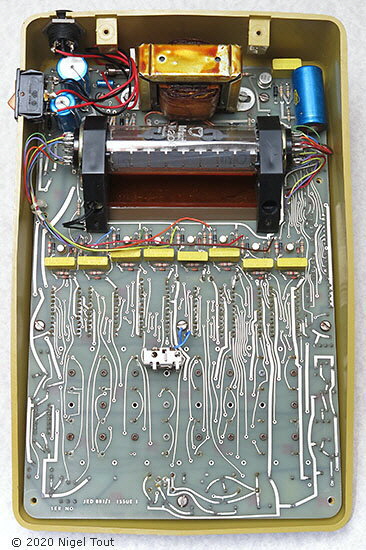
The bottom cover is removed first and reveals the AC power supply with transformer at the top and the underside of the 'Pandicon' display tube mounted next to it.
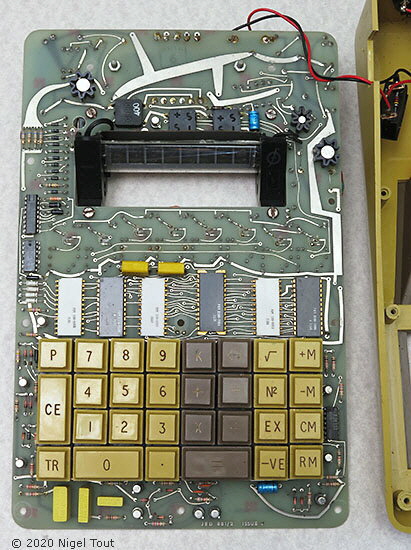
The circuit board can then be extracted from the top cover to show the 6 chips of the Electronic Arrays S-100 chip-set in line across the middle.

Close up of the 6 chips of the Electronic Arrays S-100 chip-set used in this machine. These are all 24-pin devices except the FDY 320B-7002 (third from right) which is a 28-pin device.
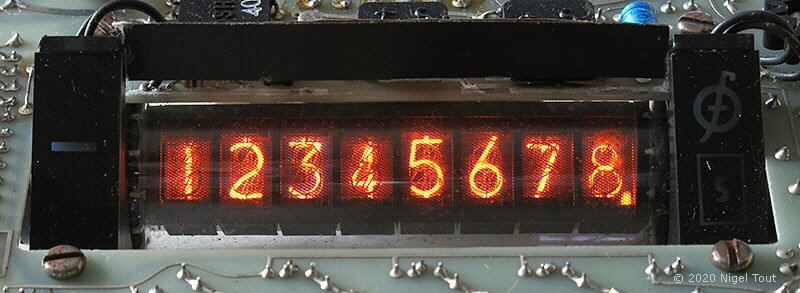
Close up of the Mullard (a British subsidiary of Philips) ZM1206 'Pandicon' tube. This tube contains 8 'Nixie' type assemblies in a single tube.

The rear of the ZM1206 'Pandicon' showing the connections to sockets attached to both ends of the tube.
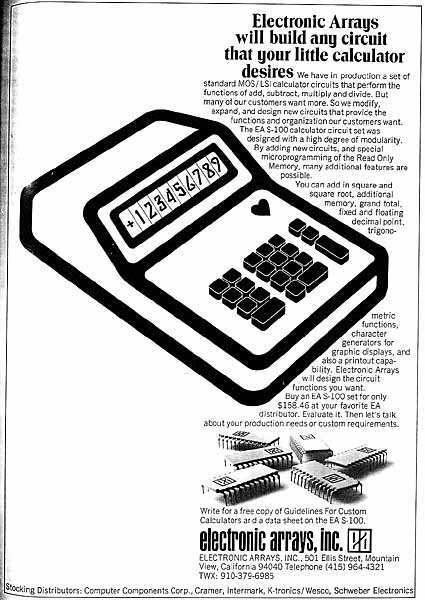
Advertisement for Electronic Arrays calculator integrated circuits, from March 1971.
Electronic Arrays produced a standard six-chip set for calculators that could be customised by adding other chips, or substituting one or more of the chips, to give extra functions. Using only six chips would offer "reduced labor costs because of the reduced assembly time. This will open up the calculator market to companies that otherwise wouldn't get into it"[2].
The quantity price of the chip set in July 1970 was $60 to $70, but was expected to halve within a couple of years.
The kit consists of an input unit; a control read-only memory; a control logic device, a register, an arithmetic unit; and an output chip, all in 24-pin packages to keep the cost down.
There is further information about the development of the Electronic Arrays chip-set at http://www.oldcalculatormuseum.com/icm816.html.
The GENIE 247 calculator in this section also uses a first-generation 'Pandicon' display.
A report in 1974 mentions that Data Devices launched calculators in about 1972 but failed to get them off the ground[1].
The only Data Devices calculators known are the Brock 880/1 calculator, illustrated here, and the Brock 140/2 with 12-digit? display.
If you have further information we would be very pleased if you would please get in touch.
References:
Electronic Desk
Calculators
Vintage Calculators
Text & photographs copyright, except where stated otherwise, © Nigel Tout 2000-2026.